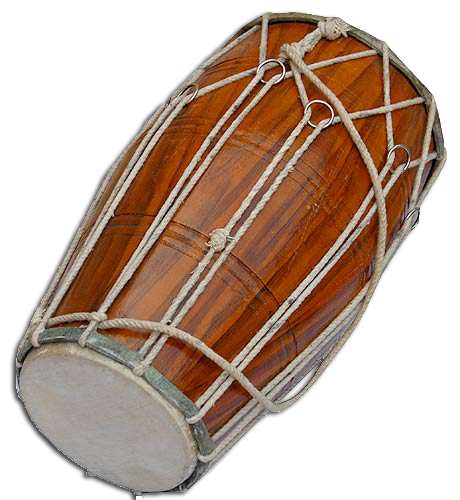Dholak is a two headed south Asian hand drum. It is a very popular drum with double skins from northern Indian folk music. The difference in diameter of the high skin and the bass skin is relatively small in order to still get a powerful bass tone.
In comparison to many other Indian drums the dholak has simple smooth skins on both sides which enable it to be played not only by using the differentiating finger techniques commonly in India, but also by using the whole hand commonly used by many African and South American drummers.
The dholak is either played on one‘s lap or while standing, slung from the shoulder or waist or pressed down with one knee sitting on the floor. In Punjab style, an iron thumb ring is used to produced a distinctive “Chak†rim sound and in Rajasthan, all fingers are used to play.
Dholak is a barrel shaped with a simple membrane on the right hand side and can be termed as smaller version of the Dhol. The left hand is also a single membrane with a application on the inner surface, This application is a mixture of tar, clay and sand which towers the pitch and provides a well defined tone. There are two ways of tightening the dholak. Sometimes are laced with rope means a series of metal strings are pulled to tighten the instrument and other times metal turnbuckles are used.
Dholak used to occupy a position of considerable prestige, however today it is merely used in filmi and folk music. It is extensively used in qawwali, kirtan, lavani and bhangra. It is still often used in Filmi Sangeet , chutney music, baithak gana, tan singing and local Indian music of Jamaica, Suriname, Guyana and Trinidad and Tobago, where it was brought by indentured immigrants.

